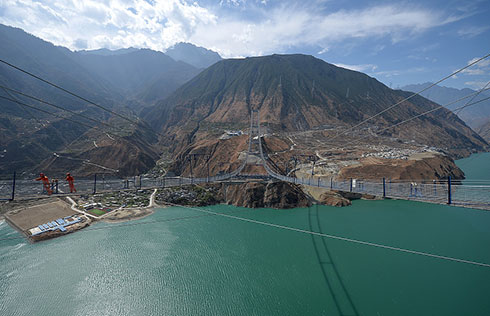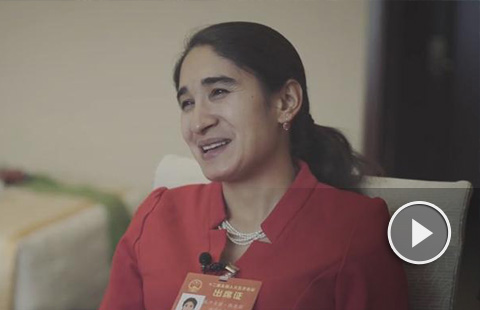Tibet maintains ambitious growth target with strong investment
LHASA - While several Chinese provinces have lowered their growth targets amid an economic downturn, the plateau region of Tibet has maintained a 12-percent growth target for 2015 with strong investment from the central government.
Tibet's gross domestic product (GDP) is expected to hit 92.5 billion yuan ($15 billion) in 2014, maintaining its double-digit growth since 1994, according to an annual government work report delivered by Losang Jamcan, chairman of the regional government, at the opening of the annual regional congress session on Sunday.
Unlike the robust growth in Tibet, the Chinese economy slowed overall in 2014. Analysts estimate that China's GDP could grow 7.3 percent over 2013.
A number of provinces, including Zhejiang, Gansu and Hebei, lowered their 2015 growth targets by 0.5 to 1 percentage point at earlier provincial economic work conferences due to dampened optimism.
Hebei, which borders Beijing, cut its 2015 growth goal by one percentage point to 7 percent under unprecedented pressure from air pollution controls.
Investment has been the major contributor to growth in Tibet, which has poor infrastructure and a small population.
In 2014, investment from the central government, state-owned enterprises and the private sector reached 35.3 billion yuan, 10 billion yuan and 30 billion yuan, respectively. The combination of the three accounted for 81 percent of Tibet's 2014 GDP, according to the work report.
Operation of the 251-km Lhasa-Xigaze railway and the Zangmu Hydropower Station in 2014, at a cost of 13.28 billion yuan and 9.6 billion yuan respectively, greatly boosted economic growth in Tibet.
The chairman said fixed-asset investment in the region is expected to surpass 130 billion yuan in 2015, up 20 percent year on year, covering a wide range of infrastructure projects including railways, roads and airport renovations.
The large number of people living in poverty, poor infrastructure and weak industrial development have made the investment-driven approach a reasonable choice for Tibet, said Du Jie, a member of the regional political advisory body and Communist Party chief of the Tibet Academy of Agricultural and Animal Husbandry Sciences.
Tibet still has more than 320,000 people living under the national poverty line of 2,300 yuan per year, about 10 percent of the regional population. Urbanization in the region hit 25.7 percent in 2014, much lower than the national average of 54 percent.
Although the per capita net income of farmers and herdsmen in the region continued its double-digit growth in the past decade and hit 6,578 yuan in 2013, it is still only 73 percent of the national average.
Another reason for maintaining a high growth target is Tibet's urgent need to catch up with other provinces to fulfill the national goal of building a well-off society by 2020, said Lian Xiangmin, a researcher with the China Tibetology Research Center.
Only by keeping a fast pace of development can Tibet catch up with others, said Lian.
It is hard for Tibet to achieve the same level of development as developed regions, but the central government has demanded that per capita income of farmers and herdsmen and basic public services in Tibet approach the national average, said Losang Jamcan at the regional economic work conference in late December.
It is impossible to fulfill the central government's demands without a 12-percent growth target, said the chairman.
However, experts warn the regional government to reduce its dependence on investment while taking advantage of the massive investment from the central government to cultivate Tibet's own industries to achieve sustainable development.
Tibet should accelerate development of industries particular to the region, including highland barley, natural mineral water, Tibetan medicine, animal husbandry and tourism, to transform its resource advantages into an engine of economic growth, said Tubdan Kezhub, head of the School of Economics and Management with the University of Tibet.
- Two H7N9 cases reported in central China
- Thai edition of Xi Jinping: The Governance of China graces book fair in Bangkok
- 19 held over fatal construction site accident in China
- Three arrested in Beijing for theft from imperial tombs
- Chinese premier sends condolences to Swedish PM over Stockholm truck attack























